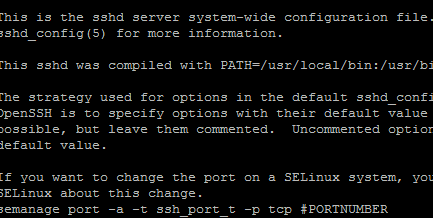cpanel Optimization
https://engintron.com/ – nginx fro WHM/cpanel
https://my.bluehost.com/cgi/help/2521
https://nixcp.com/free-cpanel-plugins/
https://engintron.com/ – nginx fro WHM/cpanel
https://my.bluehost.com/cgi/help/2521
https://nixcp.com/free-cpanel-plugins/
First you will need to login to WHM Then go to “Home »Account Information »List Accounts” Click the “+” to the left of the account you want to have SSH Select “Modify Account” from the list. Then scroll down to the “Privileges” section and select “Shell Access” Now hit “Save”
http://www.wikihow.com/Find-a-File-in-Linux find / -type f -iname “libphp5.so” find / -type d -iname “ibdata1” find / -type f -iname “*arcconf” grep -R ‘AllowNoPassword’ / egrep ‘User’ /etc/apache2/apache2.conf grep DocumentRoot /etc/apache2/apache2.conf To find files larger than 100MB, use this command: find / -type f -size +100000k -exec du -h {} \; Search within files for specific text:…
Optimizing an Entry Level WHM/Cpanel VPS Server https://my.bluehost.com/cgi/help/2521 How To Enable GZIP Compression In cPanel WHM https://nixcp.com/free-cpanel-plugins/
https://www.lisenet.com/2014/measure-and-troubleshoot-linux-disk-io-resource-usage/ smartctl -a /dev/sda SMART attributes to watch out for: ID# ATTRIBUTE_NAME FLAG VALUE WORST THRESH TYPE UPDATED WHEN_FAILED RAW_VALUE 1 Raw_Read_Error_Rate 0x000b 100 100 050 Pre-fail Always – 0 2 Throughput_Performance 0x0005 100 100 050 Pre-fail Offline – 0 3 Spin_Up_Time 0x0027 100 100 001 Pre-fail Always – 12029 4 Start_Stop_Count 0x0032…

You can set your SSH port through the command line by editing the ssh configuration file ( /etc/ssh/sshd_config ) with this command. Note: if you are runnning a firewall on the server you will want to open the desired port before proceeding. nano /etc/ssh/sshd_config You can now edit the configuration file. It will start something…
Unfortunately due to the limited availability of IP addresses sometimes they are re-used from sources that have been black listed in the past. Generally blacklists are updated within 30 days of an IP not being reported for spam. However many services like Microsoft, Google, Yahoo and others, have taken to using their own systems…